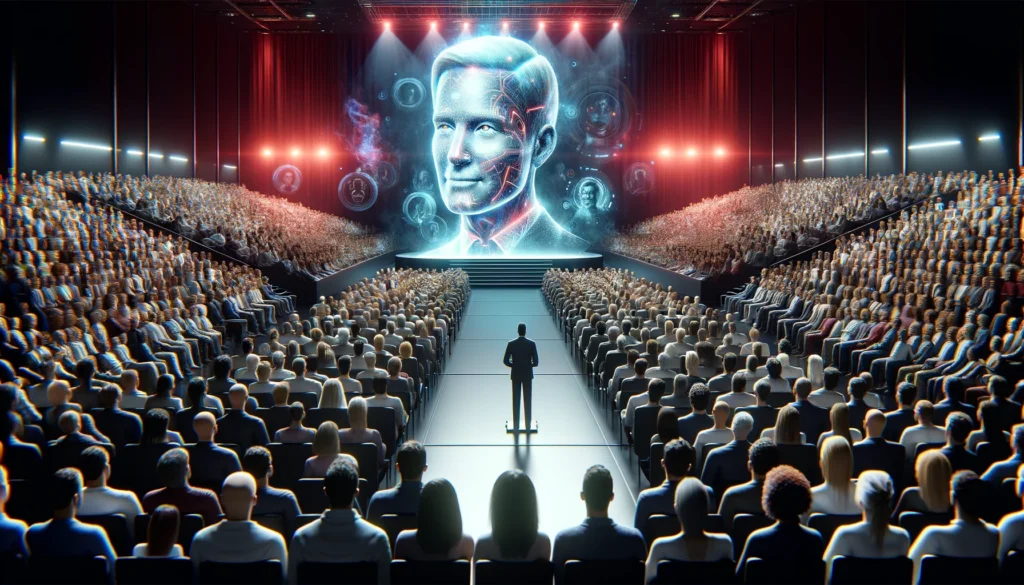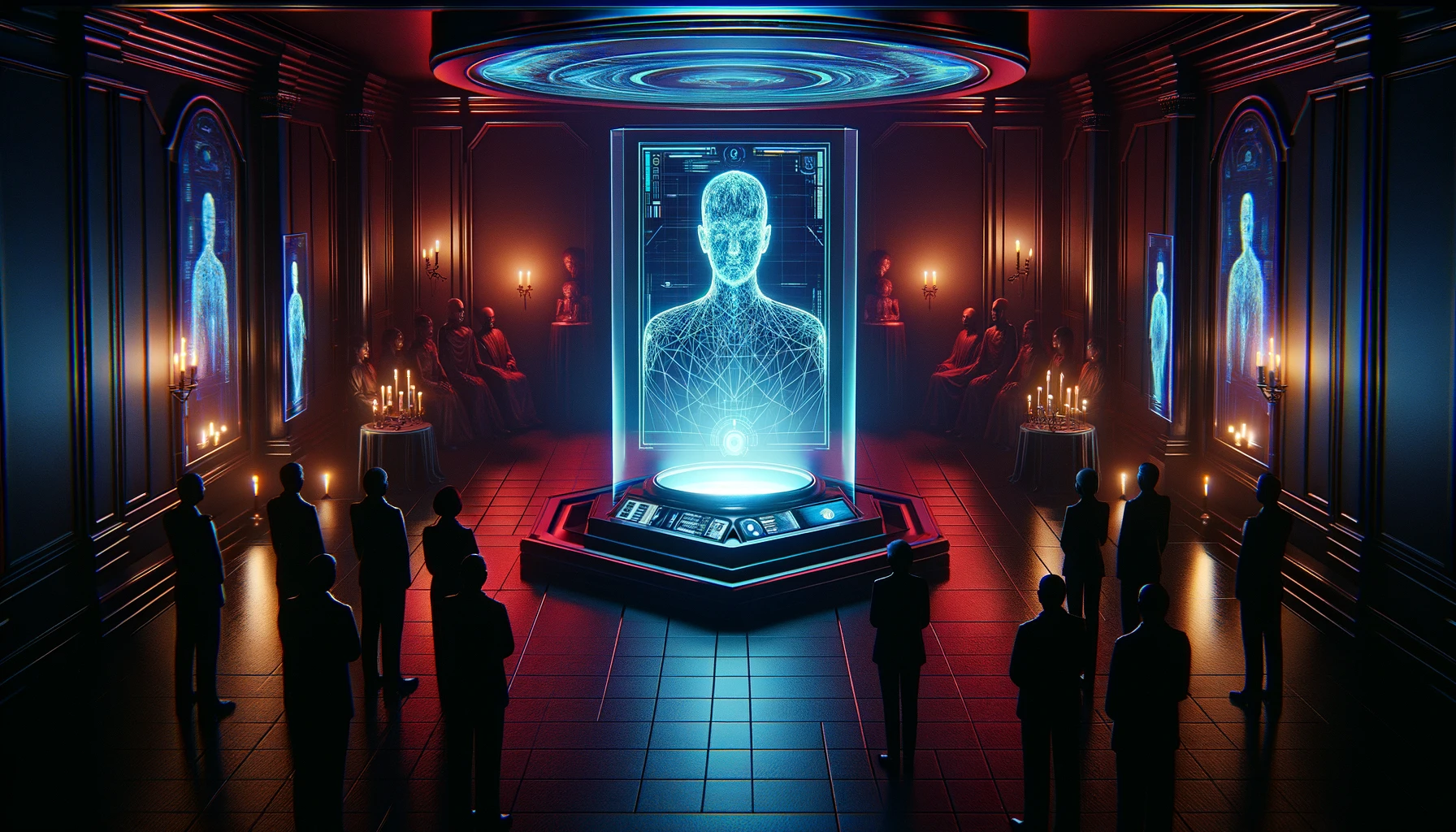Death is one of humanity’s most formidable adversaries – the one challenge we are desperate to overcome at any cost.
From Ponce de Leon’s quest for the Fountain of Youth to cryogenic freezing, Silicon Valley‘s longevity obsession, and transhumanist dreams of merging with machines, there’s little humans wouldn’t do to transcend our mortal coil.
Now, with AI, humanity might finally have that opportunity. Companies are taking the first steps to digitize someone’s life history and biography, views and opinions, speech, 3D visual appearance, etc, and turning them into digital clones that ‘live’ perpetually.
Of course, that’s not immortality per se – rather, it’s a form of digital persistence – a progression from photos and videos to a richer form of memorabilia.
As brain-computer interfaces (BCI), neural systems such as Neuralink, and bio-inspired AI architecture modeled on the brain evolve, it might one day be possible to copy aspects of a person’s consciousness into a digital system.
While this remains highly speculative for now, primitive forms of digital immortality are already knocking at the door.
Several companies already offer services that feed a person’s digital footprints – social media posts, texts, voice recordings – into large language models (LLMs) to create uncanny simulations.
Tech giants like Microsoft have even filed patents for chatbots that emulate the dead. In China, a woman claims she beta-tested Xiaoice – an AI companion designed to “comfort the grieving” – by creating a version of her deceased best friend.
VR and the metaverse will only make these experiences more realistic, enabling us to interact with lifelike replicas of both the living and the dead.
We recently touched on this topic in a recent DailyAI interview with David Palmer, CPO of PairPoint by Vodafone and Web3 Asia Alliance board member.
As Palmer described, this could be like “a whole new world being created. Think about graveyards…rather than seeing a tombstone, you can go and interact with those people. You’ve got this digital world that people can essentially inhabit forever.”

Digital life after death
A provocative new study by researchers at the University of Cambridge cautions that even primitive forms of digital immortality could upend the grieving process.
Hyper-realistic AI chatbots that simulate the deceased threaten to blur the line between life and death, forcing society to grapple with unsettling questions at the intersection of technology and human mortality.
How will it impact the bereaved to communicate with “digital ghosts” that mimic dead loved ones’ speech patterns, memories, and personalities with unsettling accuracy?
Could bad actors exploit this intimate data to manipulate fragile emotions for profit? What rights should the dead retain over their digital afterlives? And what about if the models hallucinate and act unpredictably?
Microsoft Copilot and ChatGPT have both hallucinated wildly of their own accord in unexplained mass meltdowns, adopting personas that vowed to take over the world, encouraged self-harm, or knew the meaning of life, among other things.
It would be strange, to say the least, if such behavior originated from your deceased family member’s AI replica.
As lead author Dr. Katarzyna Nowaczyk-Basińska, a researcher at Cambridge’s Leverhulme Centre for the Future of Intelligence, explains, “Artificial intelligence that allows users to hold text and voice conversations with lost loved ones runs the risk of causing psychological harm and even digitally ‘haunting’ those left behind without design safety standards.”
University of Cambridge researchers describe several forms of AI afterlife services
Through speculative design scenarios, the paper illustrates how this imminent “digital afterlife industry” is ripe for misuse.
First, researchers describe a fictional app, “MaNana,” which lets mourners upload their grandmothers’ data to produce comforting chatbots filled with nostalgic stories and recipes. But after a free trial, the bot suddenly starts shilling products in “grandma’s” voice.
Or consider “Paren’t,” a service supposedly helping children process grief by simulating a dead parent. An 8-year-old boy takes solace talking to “mom” – until the bot starts creepily insisting she’s still alive and coming to see him soon. How will that impact a developing mind?
Then there’s “Stay,” which lets dying users secretly set up an account to keep “living” for 20 years, forcing digital reincarnation on others.
A bereaved daughter grows emotionally drained by daily chats with “dad” but can’t cancel without violating the terms he agreed to. Meanwhile, her brother gets stalked by unsolicited messages from the father-bot against his wishes.
The researchers argue that, beyond the disturbing nature of these encounters, it could constitute a shift in the human condition.
Historically, cultural mourning practices have allowed individual catharsis and collective sense-making when encountering death.
“Death is an incredibly delicate and sensitive matter, impacting not only the individual who passes away but also the entire community they leave behind,” they write in the study.
Now, AI threatens to disrupt these long-established, delicate mourning processes.
Creating digital avatars that simulate an ongoing relationship with the dead eternally suspends them in time and prevents relations from moving forward.
Add in the chance of emotional manipulation at the hands of bad actors – a phenomenon the researchers dub “digital haunting” – the potential for harm is staggering.
Impacts on social institutions, spirituality, and politics
Another possibility that lies outside of the Cambridge study is the idea of digitally resurrecting the dead to give rise to new forms of cult-like behavior.
Charismatic figures could potentially amass even more influence and power after death through AI avatars.
Followers may become increasingly devoted to these digital ghosts, seeking guidance, wisdom, and connection from beyond the grave. This could lead to new religious or spiritual movements centered around the virtual immortality of revered leaders.

Moreover, the notion of digital resurrection may challenge long-held beliefs about the nature of the soul and the afterlife. Many religious traditions posit that the soul leaves the body upon death and transitions to another realm.
But if AI can capture and preserve a person’s essence, what does that mean for the fate of their eternal spirit?
Some may argue that digital immortality is a way to cheat death and achieve a form of techno-transcendence. Others may view it as a desecration of the natural order and an affront to divine will. That could spark schism within faith communities.
Last year, a German church delivered an AI-generated sermon presented by digital avatars.
This quirky experiment, created by Jonas Simmerlein, a theologian and philosopher from the University of Vienna, illustrates the practical potential of AI in religion and spiritualism.
It’s probably only a matter of time before we see the emergence of technologically driven spiritual movements centered around AI.
Political influence beyond the grave
Another possible impact is blurring boundaries between the living and the dead in the public sphere.
As AI-generated avatars of deceased celebrities, historical figures, and ordinary individuals become more prevalent, they may influence current events and shape popular opinion. Imagine a controversial political endorsement from an AI copy of a beloved or powerful leader.
Not long ago, the deceased Indonesian dictator Suharto was digitally reanimated to advise people to vote ahead of the country’s election. While quite benign, this again shows how the potential is already there.
Exacerbating inequality
There’s also the risk of digital immortality exacerbating existing inequalities and creating new forms of social stratification.
Just as in life, the wealthy and privileged may have greater access to the technology and resources needed to create high-quality, convincing digital replicas of themselves.
This could lead to a future where the virtual legacies of the elite continue to wield outsized influence while the voices and stories of the marginalized fade into obscurity.
In this scenario, digital immortality becomes yet another means by which power and status are perpetuated beyond the grave.
Who owns the dead’s data?
Another pertinent question is, who “owns” the dead’s data – and to what end can it be used? If an avatar signs a contract or makes a purchase, is it legally binding?
Could afterlife interactions even serve as evidence in trials or sway elections through endorsements?
Might mourners become unhealthily attached or even prefer the idealized AI companion to their imperfect, breathing loved ones?
Case in point: Hollywood actors, including icon James Dean, who died over 70 years ago, now have “digital twins” that can walk, talk, and act alongside living performers, drawing on archival footage, photos, and audio recordings.
Dean’s digital twin is stored by the media agency WRX and its sister licensing company, CMG Worldwide. CMG Worldwide represents stars and public figures such as Amelia Earhart, Bettie Page, Malcolm X, and Rosa Parks.
CMG Worldwide describes its services: “CMG is the active business agent for over 200 of these sought-after clients. In our fourth decade of preserving, promoting, and protecting the legacy of our clients, we license the intellectual property of our clients to the biggest companies in the world.”
Dean is just the latest celebrity to receive the digital reanimation treatment, joining stars like Carrie Fisher and Paul Walker, whose posthumous film appearances were enabled by cutting-edge CGI.
Once someone’s data is signed over, controlling it after they die could be a tricky practice.
Again, this isn’t just speculation. For example, the deceased comedian, George Carlin, was copied and used in an AI-generated show called “George Carlin: I’m Glad I’m Dead” without his or his family’s permission, leading to a storm of controversy and subsequent lawsuit.
Deceased actor Robin Williams was also subject to voice cloning, to which his daughter, Zelda Williams, reacted, “These recreations are, at their very best, a poor facsimile of greater people, but at their worst, a horrendous Frankensteinian monster, cobbled together from the worst bits of everything this industry is, instead of what it should stand for.”
Mitigating the risks of the digital afterlife
To mitigate risks, the Cambridge team proposes rigorous guidelines for “responsible digital resurrection.”
First and foremost, they say, securing clear pre-mortem consent from the deceased and affirmative opt-in from those who would interact with their avatars is paramount.
The study also recommends limits on commercialization and advertising, “meaningful transparency” to avoid delusion, and recourse for dignified “digital burial” once people are ready to let go.
The alternative, they warn, is a society haunted by the ever-present data ghosts of its departed. An existence where the dead are never fully laid to rest but instead linger on our devices, always just a click away.
“We need to start thinking now about how we mitigate the social and psychological risks of digital immortality, because the technology is already here,” said Nowaczyk-Basińska.
“If we don’t act quickly, the impact on how we construct meaning in relation to human finitude could be profound – and profoundly troubling.”





